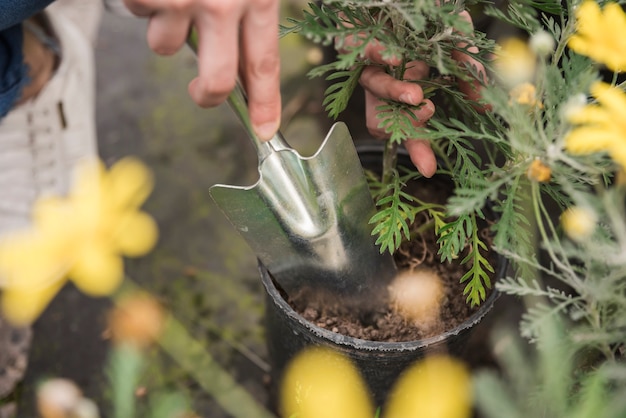
Growing herbs can be a rewarding hobby, whether you’re interested in their medicinal benefits, culinary uses, or simply enjoy their beauty and aroma. To be a successful herb gardener, it’s crucial to know when to plant, how to care for your herbs, and the best techniques for harvesting them. Here are some valuable tips to help you get the most out of your herb garden.
1. The One Third Rule
For most herbs, avoid harvesting more than one-third of the plant’s above-ground growth at one time. This ensures the plant has enough leaves to regrow. However, there are exceptions. For instance, chives grow back faster if you cut all the leaves close to the ground. Herbs in the mint family, like catnip and lemon balm, also regrow better if you cut all the stems above the first or second set of leaves from the base.
2. When to Begin Harvesting
The right time to start harvesting depends on the herb:
– Basil: When the plant is 6-8 inches tall.
– Chives: When the leaves are thick enough to use.
– Cilantro: When stems are 6-12 inches long.
– Lavender: Anytime after the stems have flowered.
– Lemon Balm: Anytime during the growing season.
– Oregano: When the plant is 3-4 inches tall, best in mid-summer.
– Parsley: Anytime after mature leaves appear.
– Peppermint: Anytime during the growing season, best before blooms appear.
– Rosemary: Anytime.
– Sage: Lightly in the first year; anytime year-round from the second year on.
– Tarragon: Anytime after new growth begins in spring.
– Thyme: Anytime, best just before blooms appear.
3. How to Harvest
Different herbs require different harvesting methods:
– Leafy annuals like basil should be harvested by pinching off bunches of leaves from the stem tips. Clip stems close to a leaf pair to avoid leaving stubs.
– Long-stemmed herbs like cilantro, parsley, lavender, and rosemary should be cut near the base, about an inch from the ground.
– Leafy perennials like oregano, thyme, sage, and tarragon can be harvested by the stem or sprig.
4. Flower, Seed, or Leaf?
Some herbs can be harvested for multiple purposes:
– Cilantro: Harvest for leaves before it bolts; for coriander, wait until seed pods form.
– Lavender and echinacea: Harvest flowers just before they fully open.
– Basil and dill: Remove flower stalks to encourage more leaf production.
– Oregano, thyme, and mint: Best harvested just before they bloom for optimal flavor.
– Seeds: Herbs like cilantro and parsley can be allowed to go to seed for replanting. Basil and oregano have tiny seeds best harvested by clipping mature flower stalks and drying them.
5. Harvesting Clippings
Some herbs can be propagated from clippings:
– Basil: Cut long stems, remove all but two to three leaf pairs, and place in water to root.
– Rosemary and mint: Take clippings from fresh growth, trim extra leaves, and plant in damp soil.
6. Knowing When to Stop
Perennial herbs like thyme and rosemary can be harvested year-round. Others, like sage and mint, should be given a rest period before the first frost. Do your last big harvest about two months before the expected frost, then harvest lightly unless you plan to bring the plants indoors.
7. Drying Herbs
Drying is a popular way to preserve herbs, especially woody-stemmed ones like rosemary, oregano, and lavender. Cut long stems, bundle them, and hang them to dry. Ensure they are free of dew to prevent mold. Alternatively, use a food dehydrator for quick preservation.
8. Oil and Butter
Preserve herbs by adding them to olive oil or making herb-flavored butters. Ensure herbs are dry to avoid bacterial contamination. Dry them using the methods mentioned above before adding to oil or butter.
9. Preserve with Vinegar
Herbs can also be preserved with vinegar. Add fresh herbs like rosemary, tarragon, or basil to clean glass bottles and fill with vinegar. Choose mild white vinegar for delicate herbs and stronger vinegar like apple cider for robust herbs.
10. Freezing Herbs
Freezing is great for tender, leafy herbs like basil and mint:
– Paint leaves with oil and store in a resealable freezer bag.
– Blend chopped herbs with a bit of oil to form a paste, wrap in wax paper, and freeze.
– Chop herbs and place in ice cube trays filled with water. Freeze and use as needed.
11. Salt and Sugar
Use salt to preserve herbs like rosemary, tarragon, marjoram, and oregano. Layer salt and whole leaves in a jar, pressing firmly. Alternatively, blend herbs with coarse salt and store in airtight containers. For sweet herbs like mint, use sugar instead of salt.
By following these tips, you can enjoy a bountiful and healthy herb garden all year round.



